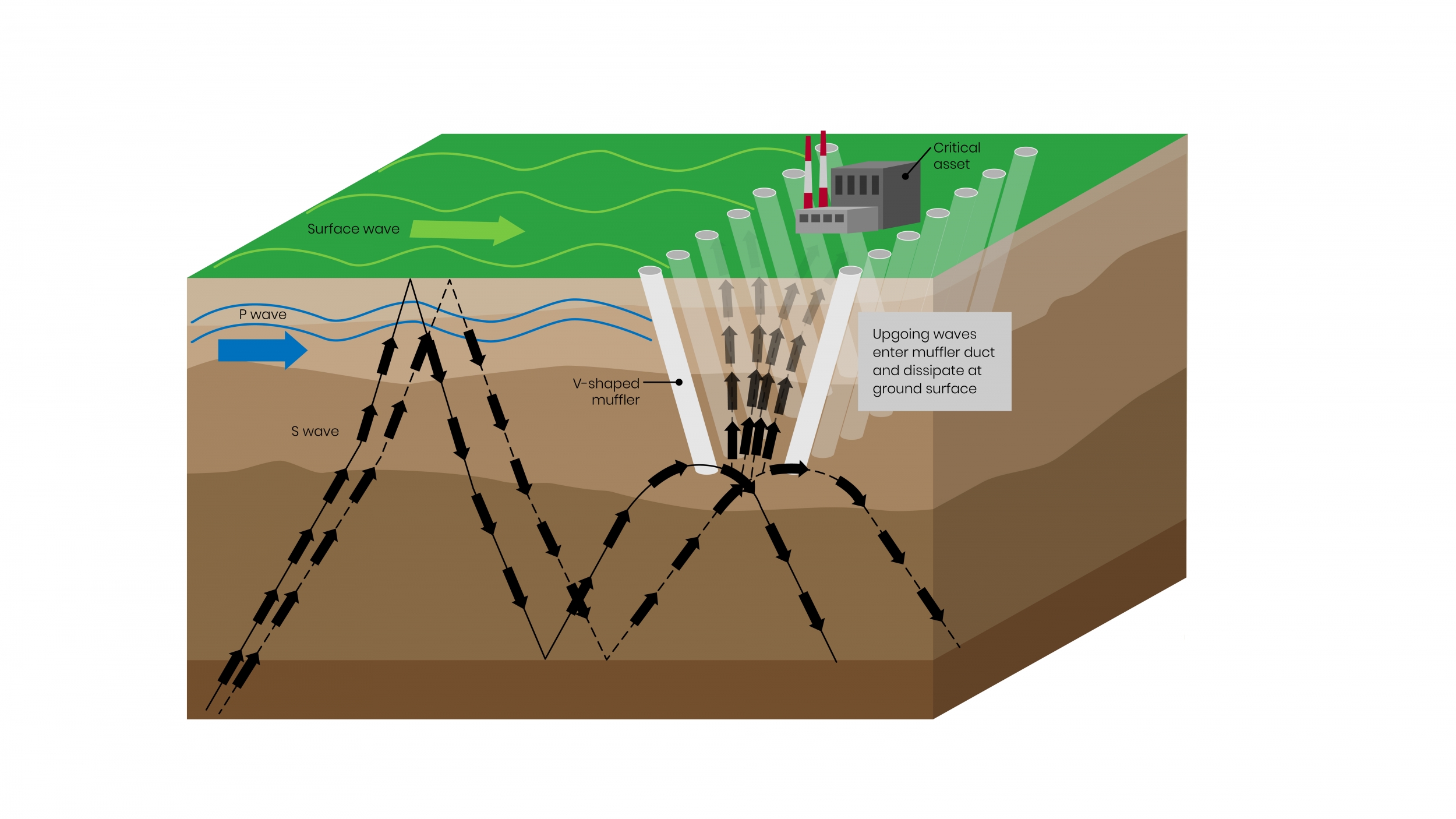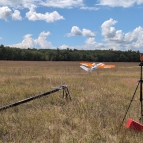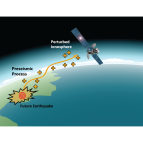Seismic-Metamaterial Cloaking to Protect Infrastructure

Worldwide each year, earthquake-shaken buildings collapse and kill thousands of people. Earthquakes can also cause serious damage to a nation’s critical infrastructure, such as gas pipelines, power plants, airport runways, and dams.
Although many new buildings and structures use designs that dampen the effects of destructive seismic waves, older structures are still highly vulnerable to significant damage or complete collapse. To minimize earthquake-related threats, we are testing a novel concept that redirects and attenuates hazardous seismic waves by implementing an engineered seismic cloaking barrier around high value structures and city regions. These barriers utilize metamaterials that create an effective subsurface medium composed of subwavelength structures with seismic manipulation properties not present in natural geological strata.
We have designed an effective geological metamaterial to form a seismic-muffler that substantially reduces seismic ground motion experienced within a specified protection region. This seismic-muffler, which utilizes sloping-opposing boreholes or trenches to form the muffler walls,
- first, counters high amplitude seismic surface waves and,
- secondly, dissipates seismic body waves that travel from depth upward into the muffler duct.
Our next steps are to expand this effort beyond complex computer simulations and laboratory-scale measurements to an earth-scale field test.




